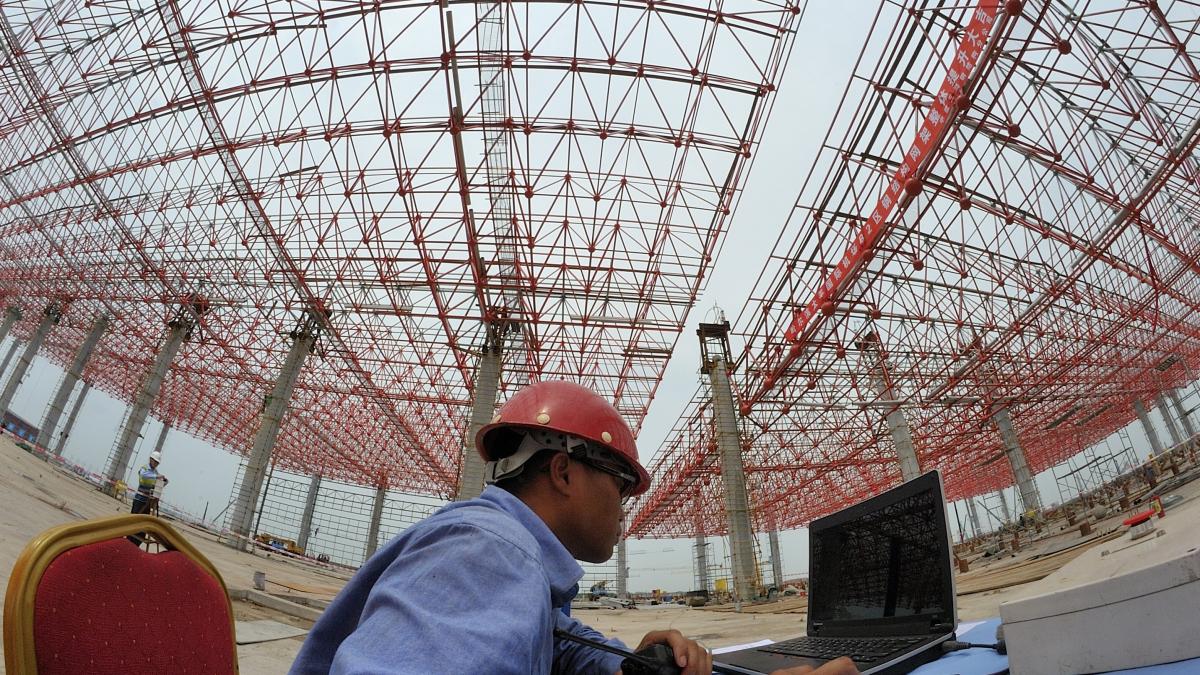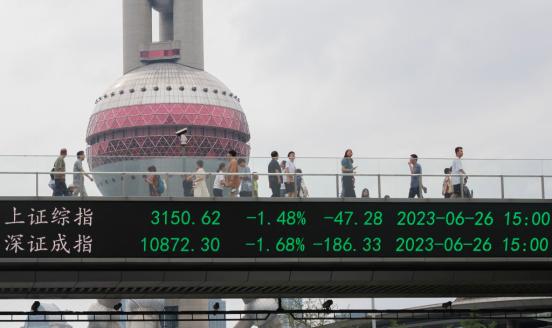When and how should the European Union conclude an investment agreement with China?
A look into the potential Comprehensive Agreement on Investment between China and the European Union.

After more than seven years of negotiations, a final agreement between China and the European Union on a Comprehensive Agreement on Investment (CAI) could be reached before the end of 2020. This deadline was agreed at the EU-China Summit in April 2019 and President Xi reminded European of the importance of striking a deal before year-end during the EU-China Virtual Summit in September.
Here, we first examine the minimum conditions that EU negotiators would want met in order to seal a deal. Second, we discuss why the timing of the deal with a year-end deadline is not favourable from the EU’s perspective.
Minimum conditions
Four considerations are of crucial importance for the CAI to make sense for the EU: how existing agreements offer investors insufficient protection; the concessions the EU should seek from China; transparency around any concessions made by EU negotiators over China’s access to the EU market; and sustainability issues.
1 Risks of the status quo
Currently, there are 25 bilateral investment treaties (BITs) between China and all EU countries except Ireland (Belgium and Luxembourg have a joint agreement). These bilateral agreements suffer from three main drawbacks. First, they only address investment protection and not liberalisation or market access, which are expected to be covered in the CAI. Second, none of the BITs cover sustainability issues, rules on state-owned enterprises (SOEs) or transparency rules on subsidies, which are priorities on the EU’s agenda for China. Finally, the coverage of the BITs is quite variable, as are their exceptions. For example, the French BIT covers culture issues while the Finnish BIT focuses on the prohibition of unreasonable or discriminatory local content measures for investment.
These are all significant drawbacks, and it is important that the new CAI should mark improvements on all of these issues, from liberalisation and market access to the role of SOEs and subsidies, while not forgetting sustainability issues. On liberalisation, China generally puts in place measures on a multilateral basis, though the US-China Phase 1 deal contains some specific exceptions. The main liberalisation measure China is bringing to the negotiating table with the EU is the Foreign Investment Law, which clarifies treatment of foreign investment in China (see below). But this law is not the outcome of EU-China bilateral negotiations as it protects all investors. On SOEs and subsidies, it seems highly unlikely that China will make any significant concessions to the EU, certainly not in the short run. Overall, having a united framework covering all EU countries is preferable to the current patchwork of bilateral agreements, but such a move should be accompanied with market access improvements to make the effort worthwhile. The CAI will be a treaty and cannot be reviewed easily, so there will not be many other chances for the EU to secure improvements in terms of access to the Chinese market.
2 What concessions should be sought from China? Market access is crucial
Better access to China’s market and, thereby, improved reciprocity, is a long-standing EU request. This would mean China relaxing non-tariff barriers and allowing foreign companies to enjoy the same levels of transparency and fair competition that Chinese companies enjoy on the EU market. China has taken some market access measures but they are incomplete. In particular, China enacted the Foreign Investment Law in 2019 (in force since 1 January 2020), which replaces existing laws on wholly foreign-owned enterprises, contractual joint ventures and equity joint ventures. The law marks an improvement because it allows for a much shorter ‘negative list’ of protected sectors (33 now) and covers the nation rather than just some free trade zones. However, very important sectors remain closed to foreigners, including IT and telecommunications, automotive and education. Also, China still lacks a single legal framework for all types of companies, which is very different from what Chinese firms experience when entering the European market, where they are subject to EU company law and competition law. The different legal status of foreign companies in China is exactly why reciprocity – similar treatment of Chinese and European companies in each other markets – remains elusive.
China’s state-owned companies remain very different from private and foreign companies. Companies that are wholly foreign owned and foreign companies incorporated in China (operating without control through joint ventures) are also treated differently. This is clearly a structural characteristic of China’s legal system, which is as hard to change as it is important when attempting to level the playing field on China’s market.
Both the US and the EU have tried to deal with the pervasive role of SOEs without much success. An arena for potential cooperation, pushed by the International Monetary Fund and US negotiators, is the concept of competitive neutrality to ensure that SOEs cannot benefit from their special status in terms of different legal frameworks, cheaper access to funding and/or subsidies and lower taxes. China has so far refused to introduce this operational benchmark to counterbalance the advantages enjoyed by SOEs.
Another important issue is investor protection beyond that provided by national-level BITs. China’s Foreign Investment Law partially addresses EU concerns, providing clearer legal foundations for more effective protection of foreign investors’ rights (including stronger intellectual property rights protection that prohibits forced technological transfer). However, the different legal framework that applies to foreign companies remains a hurdle to reciprocity: the EU does ensure a level playing field through the non-discrimination principles enshrined in EU law. The situation could actually become even more complex than before because China has enacted a series of security-related laws (the National Intelligence Law and the Cyber Security Law are good examples) which generally hamper foreign firms. China’s rollout of a corporate social credit system is set to further complicate the business climate for EU companies in China.
All in all, while information on the state of the CAI negotiation remains limited and it is hard to judge how many concessions have been made on market access and the role of SOEs, the Foreign Investment Law and the shorter negative list is nevertheless a welcome attempt to improve China’s treatment of foreign companies. However, it clearly falls short of what would be needed to sign such a landmark deal.
3 Potential EU concessions
From the European perspective, the strategic importance of what China expects to obtain from the CAI seems crucial in the assessment of whether the agreement should be concluded. China’s main goals are to maintain its access to the EU market, including through acquisitions of companies in all sectors, and also to establish uniform EU-wide protection for Chinese investment. Some new EU initiatives, including EU-level investment screening and moves on foreign subsidies, could become a factor in the CAI negotiation. There could thus be a risk that such EU initiatives will be watered down, even though they are important to ensure the EU’s competitive environment.
4 What should be learned from the EU’s higher quality deals?
A last issue is whether the EU will be able to upgrade the CAI, as it has done other trade and investment agreements. A major factor in the EU’s goal of higher quality deals is the dispute settlement mechanism. The EU has made improvements to dispute settlement mechanisms in its most recent trade and investment deals (Canada, Singapore and Vietnam), with investor state dispute settlement being replaced by a new two-instance investment court system, or even a multilateral investment court. The EU is also introducing distinct provisions on the right to regulate, reaffirming the capacity of states to adopt measures in pursuit of public policy objectives, including national security. Finally, given the pervasive role of the state in the Chinese economy, one could imagine that an efficient state-to-state dispute resolution mechanism might be needed. This point is also important for the future monitoring of the market access agreement the EU and China are aiming for. It is known to be a thorny issue in the negotiations.
The EU is also now including environmental and labour provisions in its agreements. On climate change, China’s recent targets of a 55% reduction in greenhouse gas emissions by 2030 and carbon neutrality by 2060 should provide enough assurances. Labour standards could be a more thorny issue. The EU expects adherence to International Labour Organisation Conventions, such as the right to set up labour unions, collective bargaining and avoidance of forced labour.
Conclusions
Existing BITs between China and EU countries do not fully protect investments into and from China. A CAI deal should mark a significant enough change from current practices to make it worth the effort. Although the details of the negotiations are not fully known, it seems unlikely the EU will quickly secure clear improvements on market access or the level playing field because of different treatment of foreign companies in China’s legal framework. The question is then if the likelihood increases if more time is allowed for the negotiation. What can certainly improve is the situation of the European economy, helping push back against the EU’s perceived weakness at the negotiating table. The lack of breakthroughs and the EU’s current focus on managing the COVID-19 pandemic are additional reasons why rushing this deal would seem unwise. The arrival in January of a new administration in the US, the EU’s largest trading partner, might be another argument for going slowly. The EU may wish to remain economically sovereign but that should not equate to striking economically and politically important agreements at the wrong time.
Recommended citation:
García Herrero, A. (2020) ‘When and how should the European Union conclude an investment agreement with China?’ Bruegel Blog, 17 December



